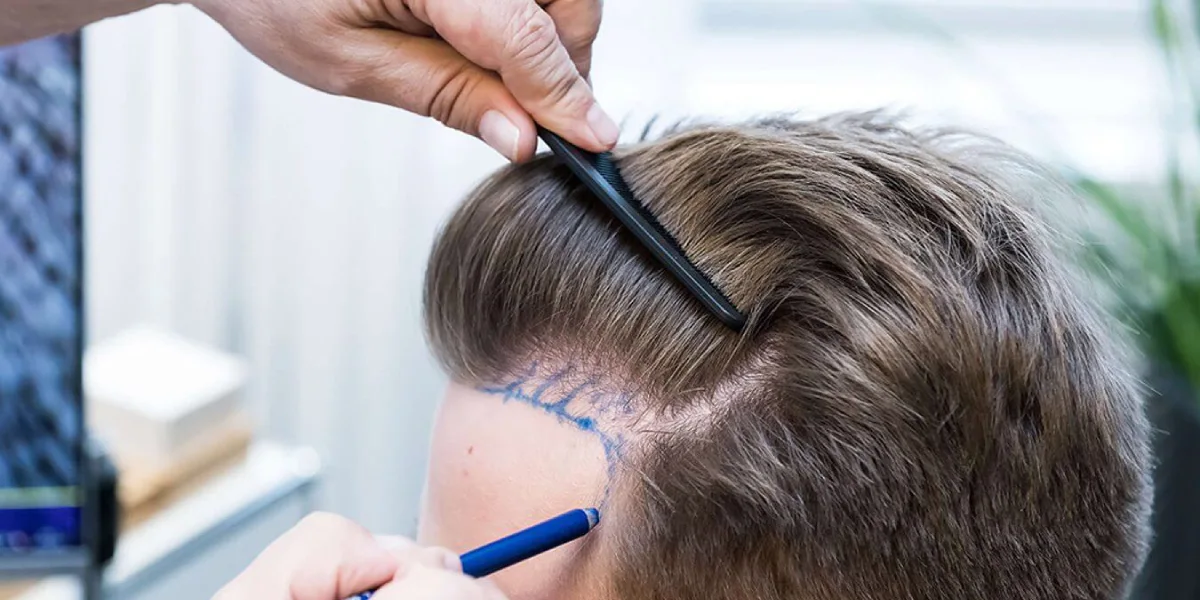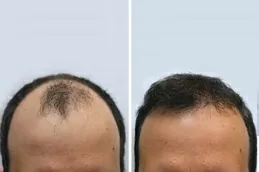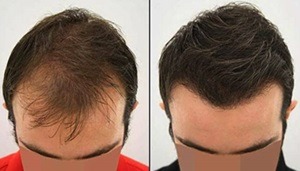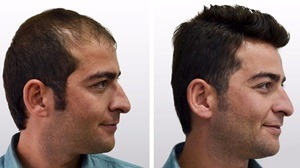
Hair loss can be a deeply personal and emotional experience, affecting your confidence and self-esteem. Are you tired of hiding behind hats or feeling uncomfortable in social settings? With FUE Hair Transplant in Islamabad, you can achieve natural, long-lasting results. Book your consultation today and embark on a journey toward a renewed sense of self.
Hair Transplant Clinic in Islamabad offers exceptional FUE Hair Transplant in Rawalpindi that seeks to meet the desire for thick, natural hair. We recognize that the problem of baldness is never-ending, thus our clinic offers the most effective and cutting-edge modern hair restoration treatments for preventing initial hair loss and treating various phases of baldness. If you want to learn more about Hair Transplant in Islamabad, continue reading.
The primary goal of FUE Hair Transplant in Islamabad is to provide a permanent and natural-looking solution to hair loss, enhancing hair density and restoring confidence in individuals suffering from hair loss. Our skilled surgeons aim to create a fuller, denser, and aesthetically pleasing hairline that complements your facial features by strategically transplanting individual hair follicles.
FUE Hair Transplant is a minimally invasive procedure designed to restore hair in areas affected by thinning or baldness. Follicular Unit Extraction hair transplant in Rawalpindi involves extracting individual hair follicles from a donor area (usually the back of the scalp) and implanting them into the recipient area. Unlike traditional hair transplant techniques, FUE does not involve stitches or linear scarring, making it a preferred choice for many individuals.
FUE hair transplant for male and female offers a natural-looking hairline, quicker recovery times, and minimal discomfort, allowing you to resume your normal activities sooner. It is a popular treatment for baldness and thinning hair in both men and women.
The results of FUE Hair Transplant are typically gradual and natural-looking. The transplanted hair is permanent, making FUE a long-lasting solution to hair loss.



FUE hair transplants offer numerous advantages, including:
There are four primary types of FUE hair transplant procedures:
In Manual FUE Hair Transplant, a physician uses a handheld device to extract hair follicles. This method offers high precision and control but can be time-intensive.
During Robotic FUE Hair Transplant, a physician guides a robotic device to extract hair follicles. This method enhances speed and precision, ensuring consistent results.
A Handheld Motorized FUE Hair Transplant device is used to extract hair follicles, increasing efficiency while maintaining accuracy.
Automated FUE is often a mislabeling of other FUE procedures, highlights the use of advanced tools but requires the same skill and decision-making from the physician.
The main difference between manual and robotic FUE lies in the level of precision and speed. Both methods aim to create natural-looking results while minimizing damage to the donor area.
In all FUE procedures, individual hair follicles are removed using microscopic circular incisions. These are extracted randomly to reduce the appearance of thinning in the donor area. Notably, the term FUE now stands for “Follicular Unit Excision” to reflect the expertise required for graft harvesting.
FUE Hair Transplant is suitable for individuals experiencing:
However, it’s important to have a healthy donor area and realistic expectations about the results. During your consultation, the specialist will help you understand whether FUE is the right option for you.
To prepare for a FUE hair transplant, you should
Important Pre-operative instructions to remember:
Here’s how FUE Hair Transplant is performed at Hair Transplant Clinic in Islamabad:
The process starts with a consultation, where a surgeon evaluates your hair loss pattern, scalp condition, and goals. They’ll plan the extraction and implantation areas based on your hair type and desired results.
Before the procedure, the scalp is numbed using local anesthesia to minimize discomfort during extraction and implantation.
In FUE, individual hair follicles are extracted one by one from a donor area, typically the back or sides of the scalp, where hair is more resistant to hair loss. A specialized punch tool is used to extract each follicle.
The extracted follicles are carefully preserved in a nutrient-rich solution to keep them viable before implantation.
Small incisions are made in the recipient area (the balding or thinning spots) to insert the harvested follicles. The surgeon places each follicle in a natural direction to ensure a realistic-looking hairline and density.
After the procedure, there is minimal downtime, and patients can usually return to regular activities within a few days. Some swelling and mild discomfort may occur, but these typically resolve within a week.
The transplanted hair will fall out within a few weeks, but new hair growth will begin in 3-4 months. Full results are typically seen after 9-12 months as the hair follicles grow and mature.
The FUE Hair Transplant in Islamabad has a quick recovery period, making it easy for patients. Many people do not even experience enough soreness and agony to severely impede their everyday functioning for a few days. Nonetheless, certain general criteria must be followed in order to achieve the optimal therapeutic impact and the required treatment length.
After an FUE hair transplant, following post-operative instructions is crucial for optimal results and recovery. Here’s a general guide for post-operative care:
The results of an FUE hair transplant in Islamabad & Rawalpindi develop gradually over time. Around 2-3 weeks after the transplant, most of the transplanted hair will fall out, entering a shedding phase known as “shock loss,” but the follicles remain intact. New hair growth typically begins around 3-4 months post-surgery, with significant improvements visible by 9-12 months.
Full results, including thickness and density, may take up to 18-24 months to fully materialize. Factors such as the quality of your donor hair, your age, genetics, and how well you follow post-operative care can all influence the final outcome. Ultimately, FUE can provide long-lasting, natural-looking hair restoration, though some patients may need touch-ups or additional treatments for optimal results.
The cost of an FUE hair transplant in Islamabad and Rawalpindi typically ranges from PKR 59,999 to PKR 159,999, depending on factors such as the number of grafts required, the clinic’s reputation, the expertise of the surgeon, and any additional services included in the procedure.
The more grafts needed for covering a larger area or achieving denser results, the higher the cost will be. It’s important to research and consult with multiple clinics to understand the pricing structure and ensure the quality and safety of the treatment.
Some clinics charge on a per-graft basis, with prices ranging from PKR 60 to PKR 100 per graft. On average;
If you’re looking for the best surgeon for an FUE hair transplant in Islamabad, Hair Transplant Clinic in Islamabad offers highly skilled and experienced professionals specializing in this procedure. Our surgeons have years of expertise in FUE hair restoration, ensuring natural-looking, high-quality results.
With a focus on patient satisfaction, we provide personalized consultations to understand your needs and offer tailored treatment plans. Whether you’re searching for “hair transplant clinic near me,” you’ve found the right place. At our clinic, we combine advanced techniques with a caring approach to help you achieve your desired look.
Looking for an affordable hair transplant in Islamabad? At Hair Transplant Clinic in Islamabad, we offer high-quality FUE hair transplant procedures at competitive prices. Our experienced surgeons use the latest techniques to provide natural-looking results, ensuring that you don’t have to compromise on quality for affordability.
Tag:
FUE Hair TransplantКаким образом случайность делает происшест
Read MoreПо какой причине человеку критично осознан�
Read MoreПо какой причине людям нравится элемент неп
Read More